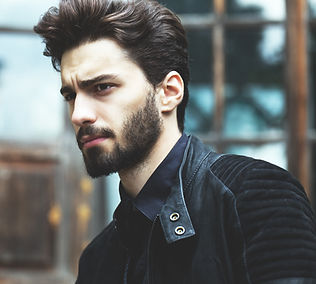Video Editing Tips

Good editing is invisible
A good editor can tell a story, when it’s over, we won’t see any edits– only that it looked seamless.

Keep it Simple
The easiest way to edit most things is with a master shot and cutaways

Cut on the action
Cutting on action is a way of preserving continuity and making cuts flow together.
If you are new to video editing, how do you know what to do?
The process doesn't come naturally - unless you're Stephen Spielberg.
As with anything it all starts with planning what you intended to film. This will depend on the complexity of your video - but no matter what - you should have had some plan for what you were going to film.
Let’s look at simple things you can to get started.
Consider these as the rules - be aware, that you can break the rules, to bring in YOUR personality -
But as the saying goes; “You need to know the rules before you can break them".
1. Know your audience.
The single most important consideration before you start editing your video is to imagine who will be watching the video. Do they want all the details or do they want to watch the video in as short a time as possible and still experience the story?
What will hold their attention?
If you have multiple audiences - then edit with more than one video.
2. Edit out stuff you don’t need – less is more.
This ties in with number 1. There are only two people who want to watch all that footage of a wedding video. The bride’s mother and you. The bride’s mother will even complain about scenes you missed. Everybody else will be asleep after a few minutes.
Remember, that the word "EDIT" actually means "Remove".
3. Keep it Simple.
The easiest way to edit most things is with a master shot and cutaways. (The main video is the "Master shot" and "Cutaways" are short segments that refer to the main video)
Let’s say that you’re making a music video.
The laziest way to do it is with one continuous shot of the entire performance synced to the audio track. This static shot by itself is boring and nobody wants to watch 3 minutes and 15 seconds of one continuous scene.
To improve the experience you also shoot “Cutaways.”
After shooting your continuous shot, you go through again and shoot closeups of the guitar player grimacing musically, the singer shaking his mullet, the audience screaming and throwing their hotel room keys on the stage, and then you put these cutaways on the track above the continuous shot without interrupting the audio of the continuous shot.
The audio track is always synced to the continuous shot, and you can cut away to other shots to keep the video looking dynamic.
This also works with family footage and even a wedding.
Your "Master" shot might be of the bride, groom, and the celebrant.
Then your "Cutaways" are used from a second camera.
They could include a medium shot of the bride’s father, a close-up of the bridesmaid crying, children fidgeting, a wide shot from the back of the hall, some panning shots across the audience.
If you don’t have a second camera then get these shots when there is a pause in the main ceremony. You could even get these shots before or after the ceremony.
This is why you need to plan the filming.
These extra shots or 'Cutaways" are often called “B-roll” which just means “other stuff” or fillers.
In your edit, you drop selections “B-roll” above the track with your main shot. You don’t want audio in the “B-roll” - the audio always comes from the main shot.
4. Keep each scene to only a few seconds
The audience gets bored if scenes are more than a few seconds in length. Switch from the Main shot then to “B” roll or cutaways. You can also use Photos or still images for cutaways.
5. Cut out Zooms and Pans
Following on from Number 4, beginners tend to film everything even while they are zooming and panning.
This is especially true at family events when the camera moves from one part of the room to another and the camera stays rolling.
Then, in the edit, the tendency is to include everything - well at least more than necessary.
Zooms and Pans look unnatural - a zoom is not something our eye can do so it looks out of place in a video.
Cut as the camera starts to zoom and cut back in as the zoom is completed. When you view the result you will not miss what was cut out.
Do the same for horizontal pans, unless it is an integral part of your story.
6. Avoid Transitions except for fade and dissolve
Just because your computer has a star wipe transition doesn’t mean you are compelled to use it.
With the exception of a few scenes in Star Wars style video, you rarely need a transition other than a cut or a fade.
To the untrained eye, a star wipe might look cool, but that’s going to wear off real quick.
On the other hand, if you want to create a "Start" to a new story or show a scene that is a jump back in time, a transition could help the effect.
The real answer to transitions is - they have their place but as I said before, “You need to know the rules before you can break them”.
7. Watch out for Jump Cuts
A jump cut is a long shot with the middle section cut out. It’s called a “jump” because while the viewer is looking at the shot, the person’s head may jump from one place to another instantly because of the video frames that have been removed.
One easy way to avoid a jump cut is to paste a cutaway over the edit; a cutaway can be almost anything – a close-up, a shot out the window, another person in the scene.
The idea is that the viewer isn’t “looking” when the jump happens.
The eye sees it but the brain does not register.
8. Watch for Continuity Errors
Continuity is a term for something that was not the same in a previous scene. This is most importantly done during filming, but even though an error may have been filmed you should watch out for inconsistencies when you are editing.
You can either avoid those shots in your edit or hide the error in some way - another use for “B” Roll.
How full should the glass be?
Where was the dog sitting?
When did a particular person stand up?
Was the person wearing glasses?
Paying attention to continuity helps your viewer believe the story that you are telling.
9. Good editing is, for the most part, invisible
A good editor can take the viewer from point A to point B, and, when it’s over, you won’t remember how you got there.
Only that it was seamless and they weren't distracted from the story, with some jarring editing effect.
10. Cut on the action
One powerful convention of editing is cutting on the action, this makes cuts flow together.
Of all the things that you can do to make your video look more professional - cutting on the Action will give the best results.
It's the smoothest way to transition between shots, especially shots which may otherwise have nothing to tie them together.
Keep this in mind - It’s the action itself that hides the cut.
A common example is a person walking up to a door and reaching for the knob.
Just as his hand touches the knob, this is the perfect opportunity to cut to a shot of the door opening from the other side.
The motion carries the viewer from one shot to the other.
It’s important to pick a spot in the action that will connect the two shots.
Imagine a scene about football: obvious cuts would be when the player passes the ball, when the receiver catches it and when the defense tackles the receiver.
This doesn’t mean that you have to cut there, but these are natural places to change camera angles.
Matching action is part of what is called classical cutting.
It means that, when you are cutting between action shots, all moving things (hands, heads, etc.) need to be in the same place at the end of the cut and the beginning of the next shot.
Even if you’re not cutting the fast-paced action of a football game, everyday situations present plenty of motion.
people sitting down, turning, opening an oven, walking through a doorway, closing a car door.
These are all actions, and every one of them provides opportunities for making natural, seamless, and invisible cuts.
The action itself is the mechanism that ties the two shots together.
Hourly rates: US$90.00 – minimum of 1 x hour.
Payment: I will send an invoice via PayPal.
(AUD$110.00 – £60.00 – €70.00 – CAD$100.00 per hour) Discounts for monthly accounts.
After each session, follow-up support is offered, via email at no charge, for a period of 7 x days
Our courses are personal “one-on-one” classes – you learn at your speed. You don’t need to worry about keeping pace with other students as you would in a group class. Of course, we can also set up group training sessions over Skype or ZOOM as well.
We guarantee that if you are not satisfied within the first 30 minutes, there is NO Charge – deposit will be refunded






